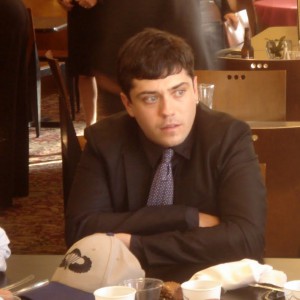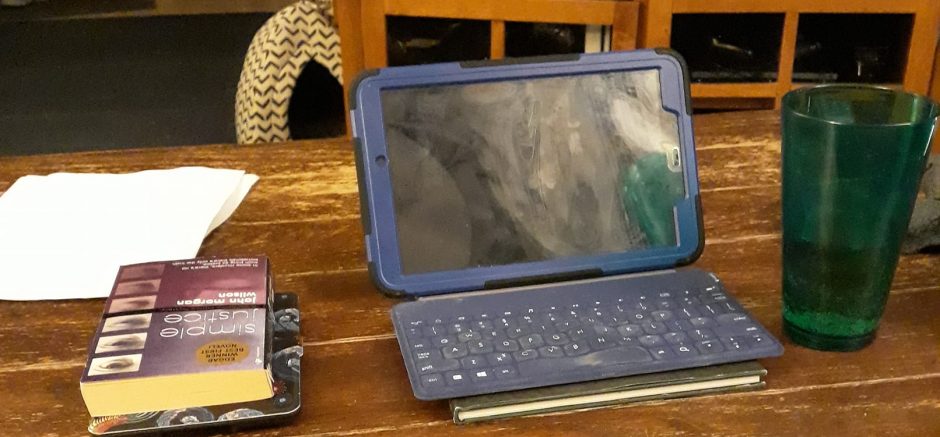Last year, Shooting Sportsman published a book entitled Hemingway’s Guns: The Sporting Arms of Hemingway. The idea of the book is that through the cataloguing of the various guns Ernest Hemingway owned over the course of his life – from his first break-action air rifle, to his trusty Winchester Model 12, to the Scott shotgun he used to commit suicide – a sort of biography can be established. “Hemingway's guns,” the authors argue in their introduction, “as well as how he acquired them and what he did with them, tell us about Hemingway as a man.”
I understand the skepticism that many people in the literary world have towards such an approach. The brandishing of guns was certainly an element of Hemingway’s macho persona, and it is tempting to dismiss any discussion of Hemingway’s relationship to firearms as merely a glorification of this persona. Furthermore, a book filled with this many pictures of guns is unlikely to appeal to a reader who does not already have a strong interest in firearms. Nonetheless, I do believe that Hemingway the marksman has a lot to teach us about not just Hemingway the man, but Hemingway the writer as well.
Ralph Ellison certainly thought so. In a 1954 Art of Fiction interview with The Paris Review, he described the two parallel influences that Hemingway held on him when he was in his early twenties:
I practiced writing and studied Joyce, Dostoyevsky, Stein, and Hemingway. Especially Hemingway; I read him to learn his sentence structure and how to organize a story. I guess many young writers were doing this, but I also used his description of hunting when I went into the fields the next day. I had been hunting since I was eleven, but no one had broken down the process of wing-shooting for me, and it was from reading Hemingway that I learned to lead a bird.
For Ellison, learning to control the swing of a shotgun and learning to write a solid sentence were part of the same process. In Hemingway, he found a teacher who had a fundamental understanding of both the very physical reality of shooting and the more abstract–but no less precise–structuring of prose.
I have discovered this relationship between writing and marksmanship in my own life as well. Last year, I entered the MFA program at The City College of New York. I was already a fairly disciplined writer, but the structure of such a program can greatly increase your focus and your attention to craft. If nothing else, you are in an environment where you are expected by your peers and instructors to produce, and to improve. A few months into my MFA experience, I joined the rifle club at the West Side Pistol & Rifle Range, the last remaining shooting range in Manhattan. I have shot guns sporadically throughout my life, but this was the first time I shot with enough regularity to really develop a shooting practice. My girlfriend and I made a pledge that, no matter how busy we were with grad school and work, we would take the time out to get to the range at least once a week, to target shoot with .22 caliber rifles.
What I have found is that these shooting sessions are not so much breaks from my writing practice as they are a complimentary part of the same larger practice. There is a shared establishment of a regular routine, and a resultant feeling of progress. There is a growing familiarity with the tools at my disposal, and a growing knowledge of how to wield them with precision.
Over this past summer break, a poet friend, Liat, and I spent some time visiting another friend who lives in a mountain cabin in Colorado. One day, when our host was off working, Liat and I decided to get some shooting in. We brought two rifles with us–a semi-automatic SKS, and an older pump action .22–and spent the day chatting and plinking at targets. We set up cans and sticks, and did our best to knock them down. We discussed the weight of the guns, the relative smoothness of their actions. We spoke of the need to breathe deeply and line up the open sights, of the absurdity of firing off rounds just to hear the bang.
During a break from shooting, we sat down on some rocks, and talked about other things. Liat brought up the book of creative nonfiction that she’s been wanting to write, saying said she felt that she needed to put this project off indefinitely in order to devote herself to her martial arts practice. Her daily training at the dojo was taking all of her focus, and the book project would have to wait until some future time, when she is in a different place.
My immediate reaction was very negative. I have always been of the opinion that the only way to get a book written in the future is to start writing it now. I told her that she would only get closer to her project by writing towards it, not by putting it off. On reflection, though, I recognize that it is not fair to say she is “putting it off,” as it is not an issue of avoiding the work at hand. Rather, she is engaging in training that will help her in the development of her craft. The understanding of the body, the understanding of force, the mastery of control and precision in a strike, and the discipline of a daily practice will all contribute greatly to her ultimate engagement with this prose work. The martial arts side of her practice that she’s developing now will brace the writing side of her practice in the future.
At the end of that same day, I was forced to use a gun to kill. I would have been more than content to shoot nothing but cans, but on our way home I stumbled upon a rattlesnake right outside the cabin’s front door. Had I encountered a snake up in the mountains, I would have simply backed away, and allowed it to go its own way. This rattlesnake, however, was not six feet from the cabin where our friend lived year round, and not two feet from the entrance to the doghouse where his curious German Shepherd napped. It simply could not be allowed to disappear into the grass, and reemerge later. We could tell by its size that the snake was young, but this only meant that it had more highly concentrated venom to inject into my friend’s foot or his dog’s muzzle.
I knelt a couple yards behind the snake with the pump rifle. It sensed danger, and as it raised its head to look around, I placed a .22 caliber bullet in the center of its neck.
It was a fatal shot, but even after the venom-filled head was completely severed, it took nearly an hour for the body to stop writhing. When the headless snake finally did stop moving, we skinned and gutted it. My friends tacked the intricately patterned skin to a board to dry, while I fried the meat in a skillet.
I’d gone out to shoot at cans, and ended up killing a beautiful animal. This experience made it clear to me that I need to remember, every time I pick up a firearm, that I am engaging in a practice whose stake are ultimately those of life and death. This is true of sitting down to write as well. I keep the rattle on my desk so I don’t forget.
 Ben Nadler is the author of the novel Harvitz, As To War, which was released in November by Iron Diesel Press. Other recent writing of Ben's can be found in The Rumpus, Harpur Palate, and The Safety Pin Review.
Ben Nadler is the author of the novel Harvitz, As To War, which was released in November by Iron Diesel Press. Other recent writing of Ben's can be found in The Rumpus, Harpur Palate, and The Safety Pin Review.
Ben lives in Brooklyn, New York. He spends most of his time at the City College of New York (where he is pursuing an MFA), but prefers to spend his time hanging out on the fishing pier in Coney Island.





